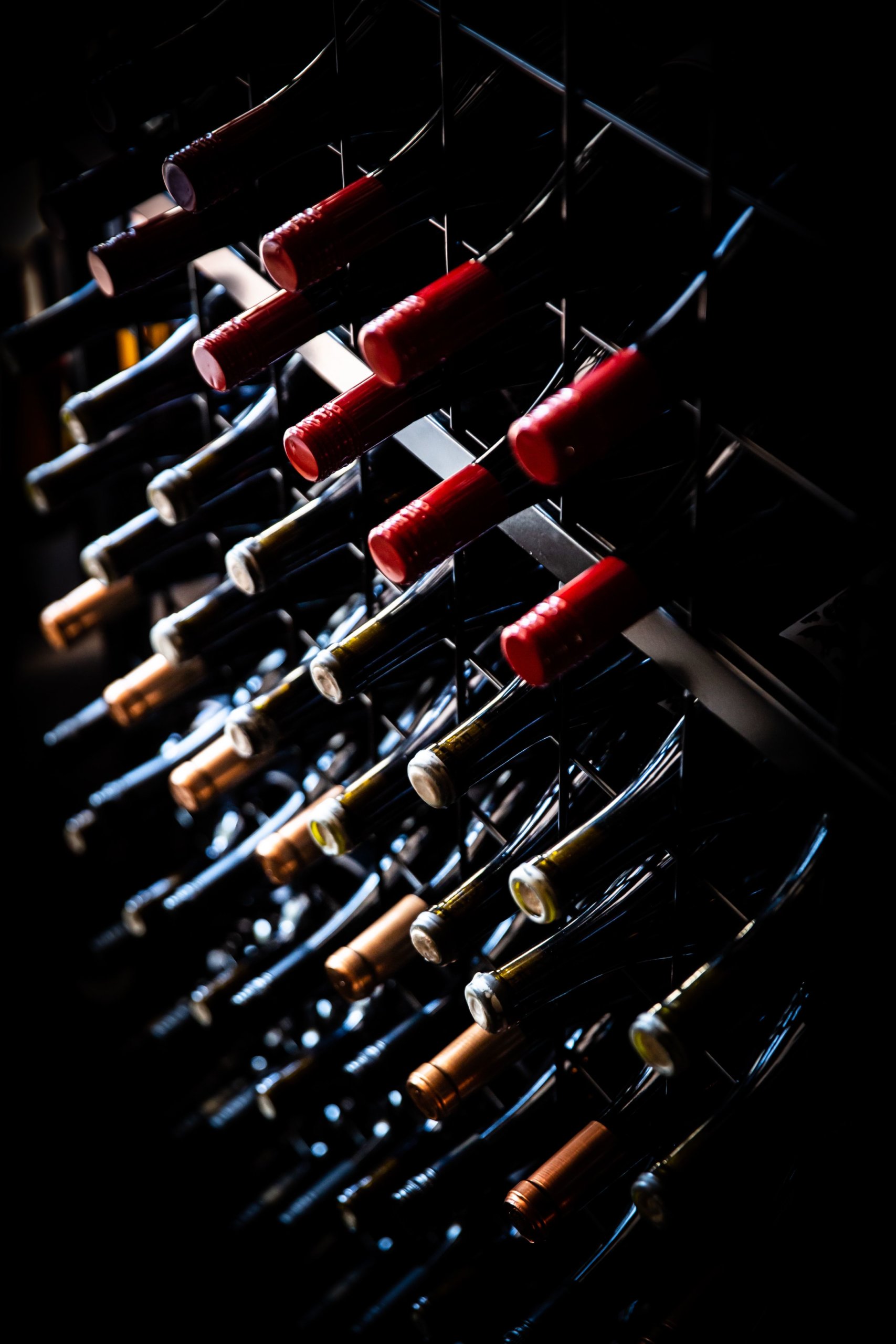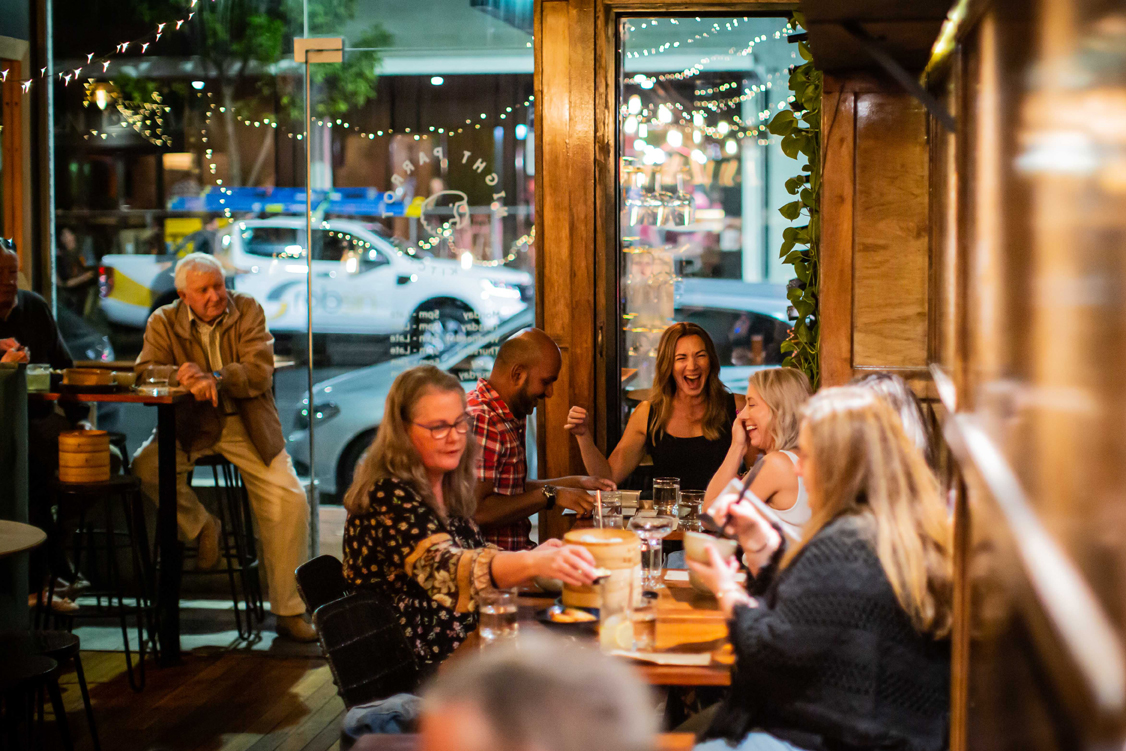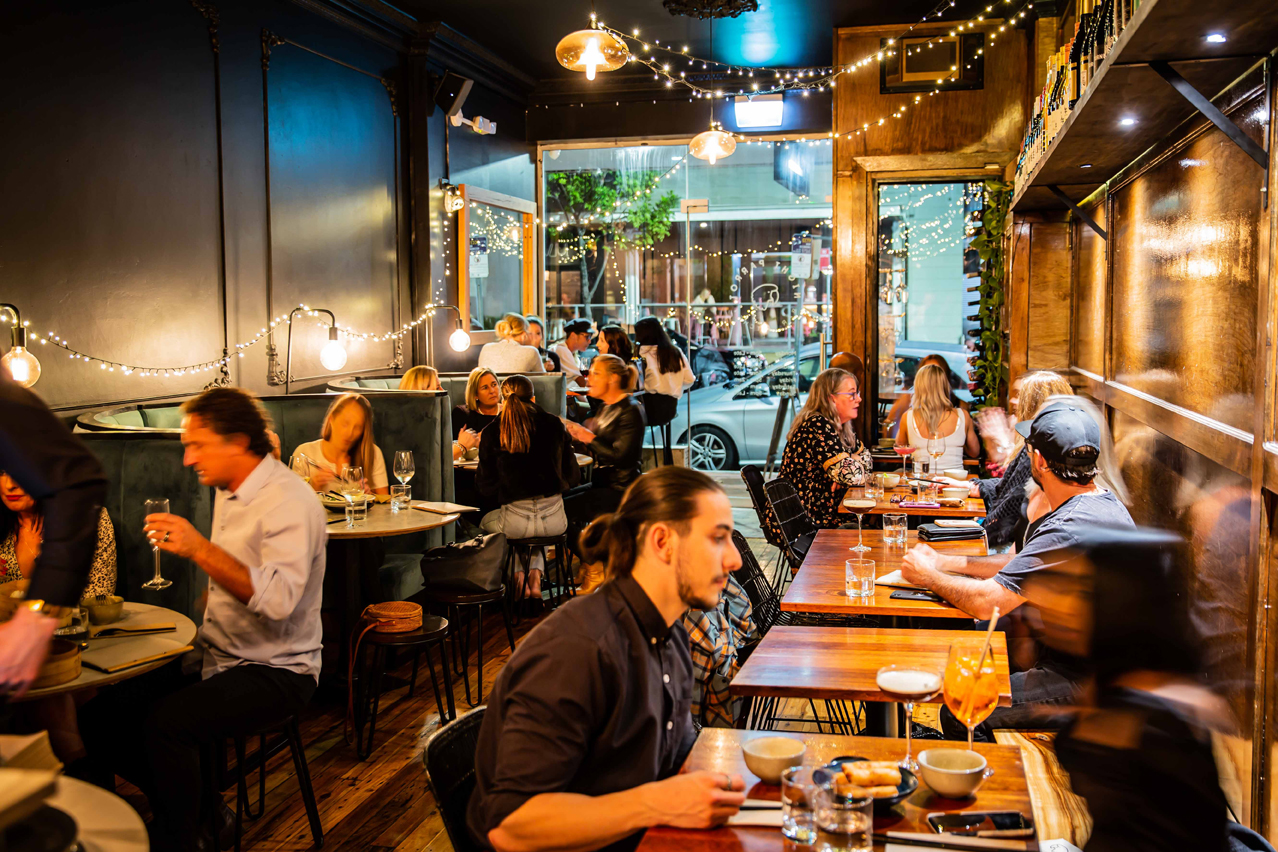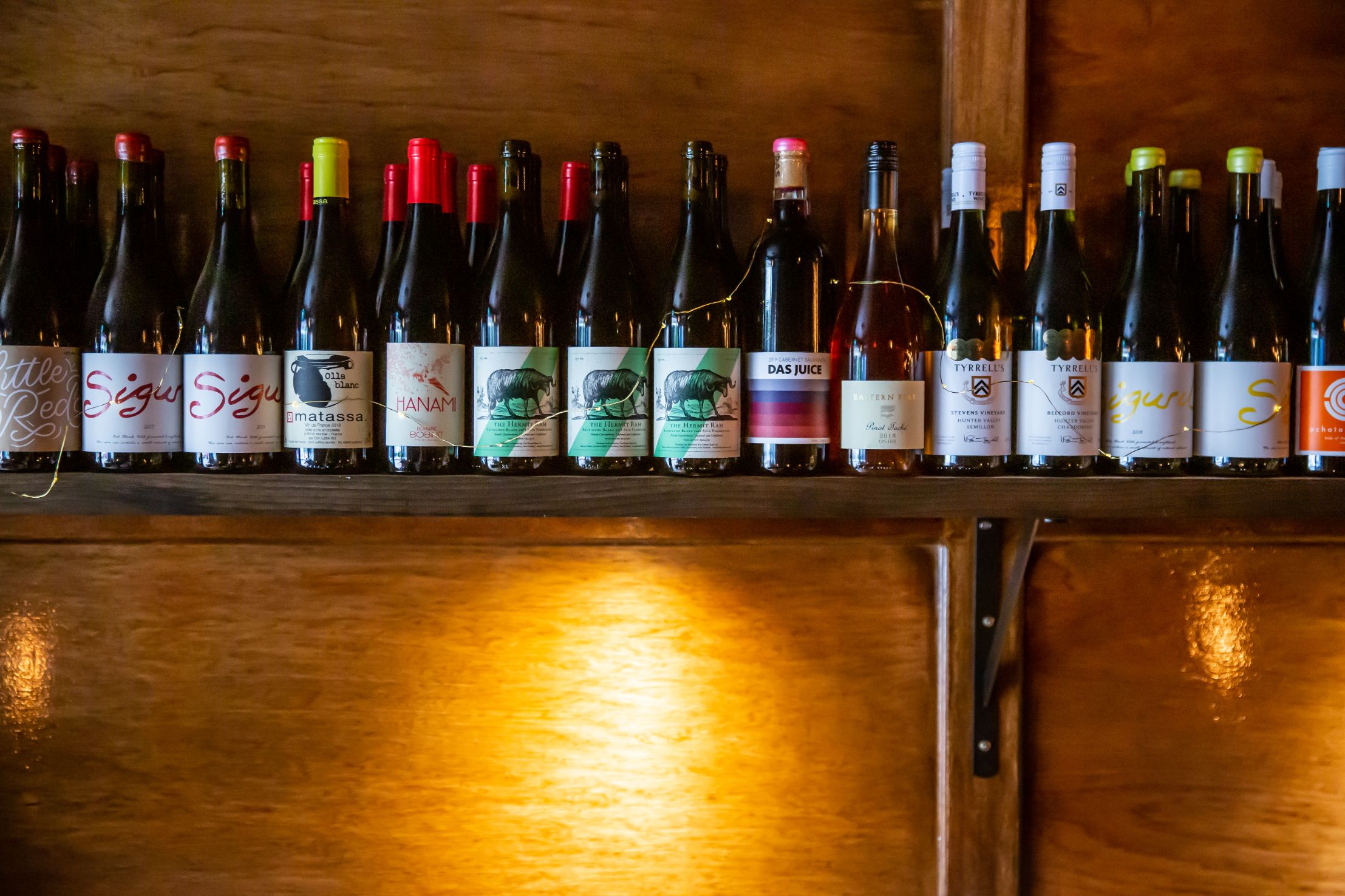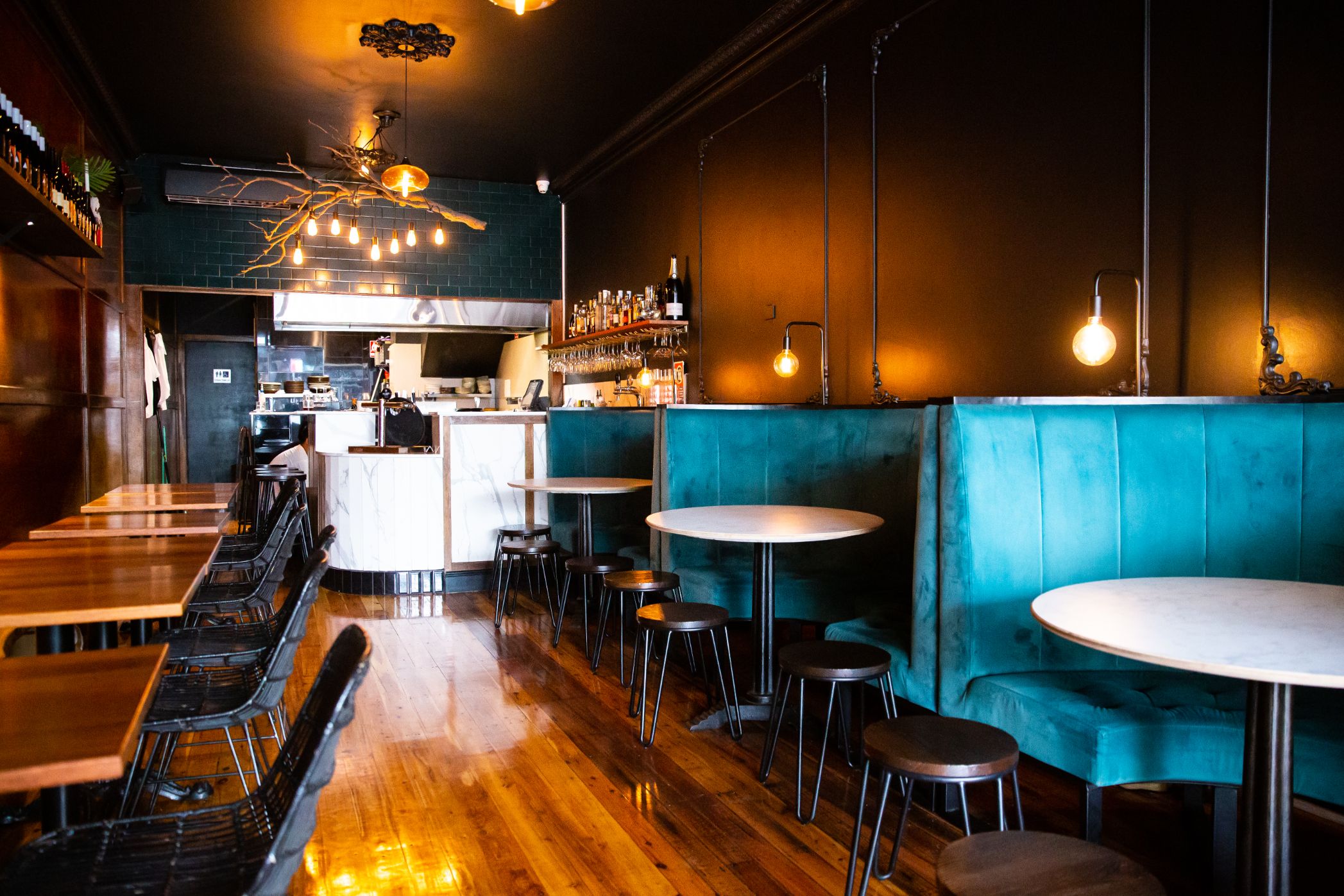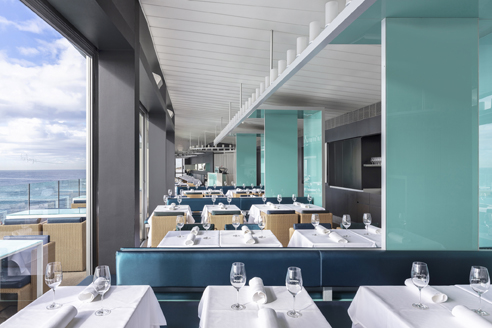The lowdown
A natural-leaning wine bar that ventures deep into the night – a rare thing in the ‘Gong – with a pan-Asian menu keeping everything nice.
The nuts & bolts
Opened 2019
When chefs Thomas Chiumento and Simon Evans bought Wollongong wine bar Night Parrot in 2019, the venue needed some work. “It took about 12 months to really transform the bar into its present form,” Chiumento says. The drinks list and the food menu doubled in size and an ultra-fast reno turned the pre-existing bar into a functional cocktail-making space.
Two years (and a global pandemic) later, and Night Parrot is the busiest bar on the busiest street of the ’Gong. The slender space, flanked by turquoise velvet banquettes and low wood-topped tables, accommodates 20-ish punters comfortably. Although that escalates on the weekends. “We are one of the only bars open till 2am on Friday and Saturday,” Chiumento says, “so our little place can get pretty rocking later at night, which is super fun.”
The Central Asian-inspired menu is a departure from Chiumento and Evans’ usual offering. At Caveau, their now-shuttered fine-dining restaurant, the pair focused on native Australian ingredients. At Night Parrot, they skip lightly from China to Japan and Korea. Steamed bao comes stuffed with char sui pork or katsu eggplant, for example, and kimchi-topped wagyu is braised in sweet soy.
The wine list leans natural and minimal intervention, although some old-school bottles get a look in. “We have a pretty basic approach in that we only sell good wine,” Chiumento says. “Good wine” being both a juicy $60 grenache from the Riverland’s ground-breaking Ricca Terra and a $400 bottle of Volnay, depending on who’s paying the bill.
The list is segmented by flavour profile, with skin-contact whites, for example, carrying the descriptors “grippy, umami, rustic” – warning for some, sweet music to others. This approach of describing flavour and texture, which has become popular in recent years, is particularly helpful when complementing the crunchy, salty, sweet aspects of pan-Asian dining. Pair the prawn har gao with Brave New Wine’s ‘Nat Daddy’ Pét-Nat from WA, perhaps, or the spicy chicken wings with a spätlese from the Mosel.

